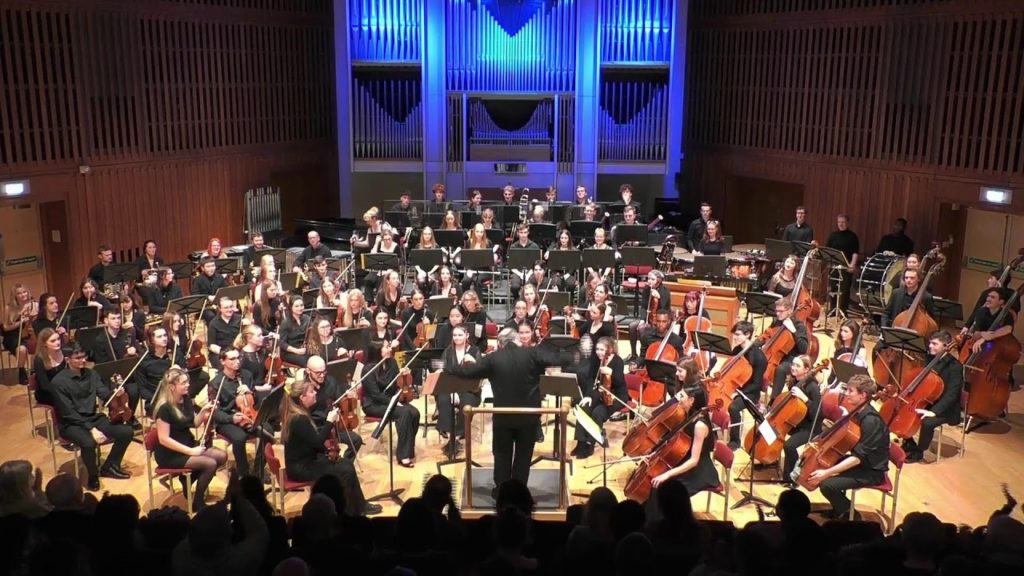
THE first thing to say about this ambitious concert was that it was played to a packed auditorium. In these difficult times this is no small achievement and great credit to the University Symphony Orchestra and conductor John Stringer, who have deservedly generated such a trusted following.
I have never heard Kaija Saariaho’s Lumière et Pesanteur in a live performance. To be honest I found listening to the work slightly unsettling. It was like swimming submerged in a spooky, murky musical lagoon.
The very effective soundscape was made from light, translucent chords. A delicate motif moved from trumpet to flute. There emerged loud tutti, trumpet and brass but these outbursts were always sucked back into the murky depths. As I said, unsettling.
Not all the exposed playing was always on the money, a little pitch unsure, perhaps lacking a little match practice. But there was no doubting the originality of the score and the performance caught the atmospheric sound world to good effect.
And so, from one Finnish great to an even greater one, Jean Sibelius. En Saga is also a powerful, descriptive tone poem. The work opens with a mysterious, distinctive mood or sheen created by glistening string playing. Again, the solo and exposed instrumental groupings seemed to lack authority and confidence.
This changed with the dramatic increase in tempo and the playing was more self-assured and enjoyable. The work is now brimming with instrumental folk-inspired dances, heroic calls on the horn. The climax of the four horns playing their notes chiuso (muted by hand), produced a particularly metallic, brassy effect.
Following some strong viola solo playing (Anna Thompson), conductor John Stringer drove the players on to a sustained orchestral climax dominated by brass fanfares. Very effective. This couldn’t last and a splendid Pip Tall on clarinet guided us toward a poignant, tranquil close.
If some of the playing in the first half seemed, I suspect, a little under rehearsed, this was certainly not the case in the second half with a terrific performance of Shostakovich’s symphonic last will and musical testament, the exceptional Symphony No. 15.
Whereas his symphonies are usually driven by external events and politics, here the drama is very much internalised. To be sure, there is fun to be had, not least in the William Tell quotations. Or is there?
The symphony, the mightiest of abstract musical forms, opens with a solo glockenspiel. It is certainly a surprise and, in this context, a dramatic one. This is followed by a seemingly carefree chirpy flute solo and then a slightly odd bassoon melody, some strange, slightly displaced string passages, familiar rhythmic echoes in the brass and then an even stranger hello from the trumpets quoting from Rossini’s William Tell overture.
The playing convincingly recreated a kind of black musical playground, or possibly fairground, where the appearance of Petrushka’s ghost wouldn’t have been that far-fetched. But if this quirky, surreal quality suggesting frivolity is a musical joke, the punchline is manifest in the darkest recesses of the following slow movement.
The University Symphony Orchestra delivered a persuasive, bleak account. It opens with a noble brass chorale ushering in a truly heartfelt cello solo; a pair of solo flutes (nicely played by Persephone Alloway and Immy McPhun) introduce the historical dotted funeral motif, with a solo trombone taking us to loud fortissimo climax.
Fine bassoon playing leads to the start of the Allegretto third movement. I think that this is meant to be played without a break, but anyhow, mercifully there was one, and I needed it. Having said that, this scherzando offers little respite as the chilling woodblock motif introduces a solo double bass theme accompanied by confident celesta playing by Joel Edmondson.
A macabre clarinet solo takes to a unsettling violin solo arriving at the movement’s closing Desolation Row. The final Adagio is brimming with quotations: the fate motif from Wagner’s Der Ring des Nieberlung and Tristan und Isolde. There are echoes of Glinka’s Do Not Tempt Me Needlessly. It is left to the celesta to take us to the final curtain restating the symphony’s opening motif.
To quote music journalist Tom Service: “The final sounds of Shostakovich’s symphonic canon are impassive, intimate, and empty. They’re among the most spine-tingling and chilling sounds in orchestral music.”
John Stringer and the University Symphony Orchestra delivered an emotional rollercoaster of the bleakest of musical journeys. They, and especially their fine soloists – Persephone Alloway (flute), Isaac McAreavey (bassoon), Mari McGregor (cello), Sam Banks (trombone), George Roberts (double bass) and Vlad Turapov (violin) – should be very proud.
Review by Steve Crowther
